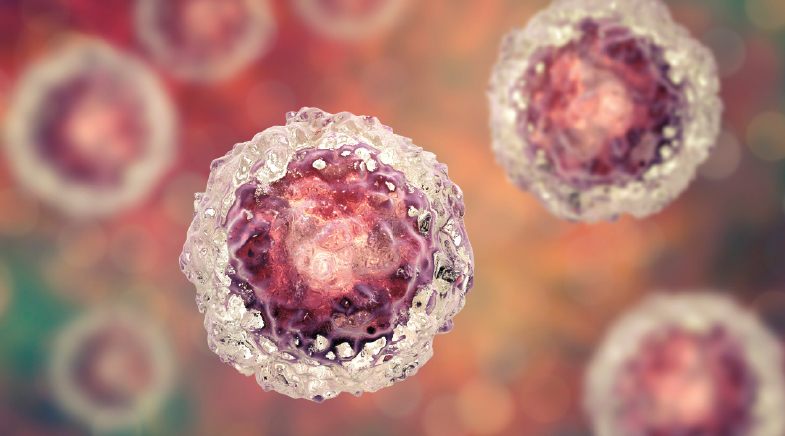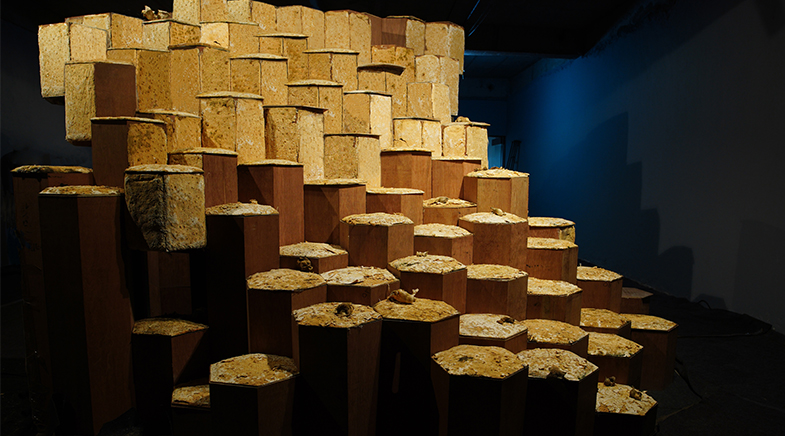Connect the dots
-
- from Shaastra :: vol 04 issue 08 :: Sep 2025

Ultrathin films made from tiny carbon quantum dots on a metal oxide conduct electricity at low temperatures.
Extreme low temperatures kill electronics, but Rama Ranjan Bhattacharjee is hoping to shake that long-standing conventional wisdom with a novel material that conducts electricity at an unprecedented 2° above absolute zero. Bhattacharjee, Dean of Research and Innovation and Professor of Chemistry, at The Assam Royal Global University, Guwahati, and his colleagues have discovered that ultrathin films made from tiny carbon quantum dots (CQDs) on a metal oxide conduct electricity at about 2 Kelvin.
"At first, our collaborators didn't believe our instruments: it's been accepted for decades that as temperatures drop, the resistance of a semiconductor rises," says Bhattacharjee. "But these CQDs show something opposite – the conductivity holds steady even at about 2 K." In contrast, standard silicon-based devices stop functioning at cryogenic temperatures. That's why Pragyaan, the Chandrayaan-3 rover, didn't wake up after its first lunar night, when surface temperatures can plummet to (minus) 133° C. Spacecraft operating in deep cold need heaters to keep electronics alive.
The material Bhattacharjee and his team members have studied is a thin film made of CQDs, particles about 10 nanometres in size with a part-graphite, part-diamond internal structure. Since their discovery by U.S. researchers about two decades ago, CQDs have been primarily valued for their optical properties. In biological imaging, they serve as fluorescent markers that illuminate cells with high precision and minimal toxicity, offering a safer alternative to heavy-metal-based dyes. In light-emitting diodes, their strong photoluminescence and colour properties help create efficient, durable and environment-friendly lighting and display technologies. Such applications rely on CQDs' optical properties; Bhattacharjee's discovery hints at their broader potential.
Bhattacharjee's work on CQDs began in a modest lab after he returned to India in 2010 following a postdoctoral position at Cornell University. "I was looking for something that wouldn't demand much equipment," he recalls. CQDs are easy to make with limited resources and rich in their properties. By 2014, he had identified what appeared to be an unusual presence of electrons trapped just below the CQDs' conduction band – like cars ready to slip onto a highway that creates electric current.
His early observations of sustained low-temperature conductivity by 2017 encountered scepticism from even some of his collaborators, prompting the team to rerun samples and repeat their experiments again and again.
That persistence gradually and at least partially helped clarify the unusual behaviour. The CQDs' part-graphite, part-diamond make-up results in a disordered internal structure. The conductivity appears to stem from this disordered structure, says Sudip Batabyal, a physicist specialising in materials science at the Amrita Vishwa Vidyapeetham, Coimbatore, who was not involved in the study.
In ordinary materials, electrons move along predictable paths and, at cryogenic temperatures, are no longer available for conduction. In the CQD films, the electrons remain trapped in the zones below the conduction bands and continue to support conductivity even at low temperatures.
"At extreme low temperatures, the hopping behaviour of electrons seems to turn into quantum tunnelling: they slip through barriers rather than climb over them," says Bhattacharjee. "That's probably why we continue to see conduction so close to absolute zero."
The discovery not only challenges textbook assumptions about semiconductors but also opens possibilities for practical applications. Electronics that can work without heaters at deep-space temperatures could reduce spacecraft weight and power demands – a potential game-changer. On the warmer side, though, the researchers have tested the CQDs up to 60° C. Since they are manufactured at 200° C, Bhattacharjee says, it is reasonable to believe they could survive close to that temperature as well. "But we couldn't confirm this," he says. "We don't have the equipment to measure conductivity beyond 60° C."
Bhattacharjee and his colleagues have published their findings in the peer-reviewed journal Diamond and Related Materials (bit.ly/CQD-low-temp). Scientists not associated with the project caution that the results should be viewed as preliminary findings that warrant follow-up research. The mechanistic explanation for the conductivity from the perspective of the CQDs' structure remains unknown, says one of the two anonymous reviewers of the paper. The other reviewer has pointed out that it is unclear how exactly this property can be applied.
Batabyal is among those enthusiastic about the promise. "This is the first time such stable conduction has been demonstrated in CQDs at such low temperatures," he says. "It highlights new possibilities with these materials."
See also:
Quantum riddles
A sound finding
Have a
story idea?
Tell us.
Do you have a recent research paper or an idea for a science/technology-themed article that you'd like to tell us about?
GET IN TOUCH














